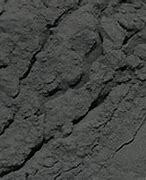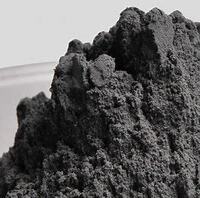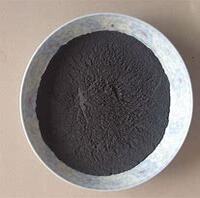Overview of 99.9% Purity Molybdenum Sulfide Ceramic Material MoS2 Ceramic Targets For Thin Film Coating
Molybdenum (Mo) is a chemical element with the atomic number 42 and is represented by the symbol Mo on the periodic table. It is a transition metal located in group 6 and period 5. Molybdenum is known for its high melting point, excellent strength, and thermal stability, making it a crucial component in various industrial applications.
Feature of 99.9% Purity Molybdenum Sulfide Ceramic Material MoS2 Ceramic Targets For Thin Film Coating
-
High Melting Point: Molybdenum has one of the highest melting points among all pure elements, at 2,623°C (4,753°F). This property makes it ideal for high-temperature applications.
-
Strength and Toughness: Even at high temperatures, molybdenum maintains its strength and hardness, which is essential for use in extreme environments.
-
Corrosion Resistance: Molybdenum exhibits good corrosion resistance to many acids and alkalis, although it can be attacked by oxidizing acids like nitric acid.
-
Thermal Conductivity: It is an excellent conductor of heat, making it suitable for applications where efficient heat transfer is required.
-
Alloying Agent: Molybdenum is widely used as an alloying agent, particularly with steel, to enhance hardness, toughness, and resistance to wear and corrosion. Stainless steels often contain molybdenum for these properties.
-
Electrical Applications: Due to its low resistivity and high-temperature stability, molybdenum is used in electrical contacts and heating elements.
-
Lubricity: Molybdenum disulfide (MoS₂) is a common dry lubricant, providing low friction surfaces in high-pressure, high-temperature conditions.

(99.9% Purity Molybdenum Sulfide Ceramic Material MoS2 Ceramic Targets For Thin Film Coating)
Parameters of 99.9% Purity Molybdenum Sulfide Ceramic Material MoS2 Ceramic Targets For Thin Film Coating
Molybdenum sulfide (MoS2) ceramic material is widely used in thin film coating applications due to its excellent properties such as high surface area, excellent adhesion to metal substrates, and good chemical stability. The purity of MoS2 ceramic material can be improved by using specialized techniques such as chemical purification or plasma cleaning.
The yield of MoS2 ceramic material in thin film coating applications depends on several factors such as the type of ceramic material used, the substrate material, the coating parameters, and the processing conditions. Generally speaking, higher purity materials result in higher yield of coatings. However, achieving 100% purity requires extensive purification and screening processes.
The parameter for evaluating the purity of MoS2 ceramic material for thin film coating applications includes:
1. Specific gravity: This parameter measures the density of the ceramic material relative to water. High specific gravity indicates that the ceramic material is less dense than water, which could affect the weight loss during thin film coating.
2. Zeta potential: This parameter measures the negative charge density of the ceramic material. Higher zeta potential indicates that the ceramic material has more negatively charged ions, which can improve the surface tension of the coating and increase the stability of the coating.
3. Cross-sectional area: This parameter measures the surface area of the ceramic material. Higher cross-sectional area increases the coverage of the coating, resulting in better coverage and lower defect density.
4. Chemical composition: This parameter measures the chemical composition of the ceramic material. By adjusting the chemical composition of the ceramic material, it is possible to optimize the performance of the thin film coating.
Overall, achieving 100% purity of MoS2 ceramic material for thin film coating applications requires careful consideration of these various parameters and a thorough testing process.

(99.9% Purity Molybdenum Sulfide Ceramic Material MoS2 Ceramic Targets For Thin Film Coating)
Company Profile
Metal in China is a trusted global chemical material supplier & manufacturer with over 12-year-experience in providing super high-quality copper and relatives products.
The company has a professional technical department and Quality Supervision Department, a well-equipped laboratory, and equipped with advanced testing equipment and after-sales customer service center.
If you are looking for high-quality metal powder and relative products, please feel free to contact us or click on the needed products to send an inquiry.
Payment Methods
L/C, T/T, Western Union, Paypal, Credit Card etc.
Shipment
It could be shipped by sea, by air, or by reveal ASAP as soon as repayment receipt.
FAQ
-
What are the primary uses of 99.9% Purity Molybdenum Sulfide Ceramic Material MoS2 Ceramic Targets For Thin Film Coating?
99.9% Purity Molybdenum Sulfide Ceramic Material MoS2 Ceramic Targets For Thin Film Coating is primarily used in the production of steel alloys, accounting for over 80% of its consumption. It’s also used in chemicals, lubricants, electronics, and specialized applications like lighting and nuclear energy.
-
Is molybdenum found naturally?
Yes, molybdenum is found naturally in the Earth’s crust, often in minerals like molybdenite (MoS₂) and powellite (CaMoO₄). It is mined as a byproduct of copper mining.
-
How does 99.9% Purity Molybdenum Sulfide Ceramic Material MoS2 Ceramic Targets For Thin Film Coating affect human health?
In small amounts, molybdenum is an essential trace element for humans, playing a role in enzyme functions. However, excessive intake can lead to toxicity, though this is rare under normal dietary conditions.
-
Is molybdenum magnetic?
Molybdenum itself is not magnetic. It is classified as a diamagnetic material, meaning it repels magnetic fields slightly rather than being attracted to them.
-
What industries rely heavily on molybdenum?
The steel industry is the largest consumer of molybdenum, followed by the chemical, oil and gas, automotive, aerospace, and construction industries.
-
Is recycling molybdenum possible?
Yes, molybdenum can be recycled from scrap materials. Given its valuable properties and relative scarcity, recycling helps conserve resources and is economically viable.

(99.9% Purity Molybdenum Sulfide Ceramic Material MoS2 Ceramic Targets For Thin Film Coating)




